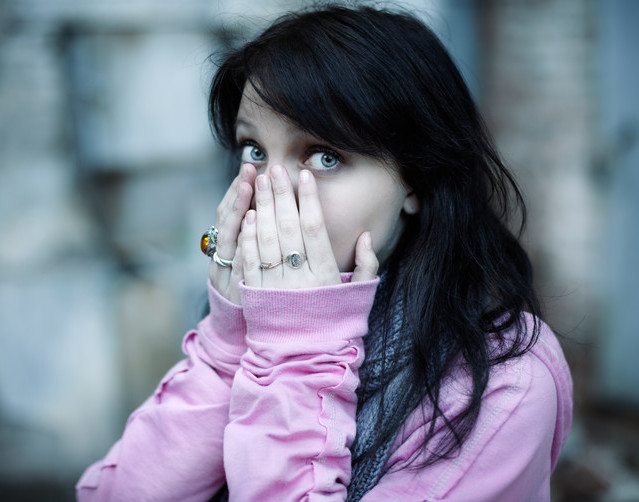The importance of character in fiction

Many of my blog posts on fiction so far have focused on big fiction issues such as plot, point of view, and dialogue. One of fiction’s larger aspects that I haven’t covered in any depth yet is character, and that’s partly because it’s an intimidating topic to blog about. There are so many complex aspects involved in creating authentic characters in fiction, characters who evoke sympathy and empathy in your readers. Despite what you may read about the importance of plot—and I don’t mean to detract from that importance at all—most fiction is primarily character driven. In other words, you may have a thrilling, original plot idea, but if you can’t bring your characters to life for readers, they may put your book down in frustration without even knowing why.
Why is character so important? Above all else, in most fiction readers want to feel engaged and connected with your main characters. The human experience is both individual and universal, and readers want to experience what my colleague Sandra Otto calls “moments of recognition” with your characters, moments in which they recognize some aspect of themselves in a character, particularly a vulnerable aspect. Sandra goes on to say it’s also about a connection with the author: “For me it’s what makes a writer stand out. I read about an experience, idea, or emotion that may or may not be commonplace. Then I understand that the author has had the same experience. And then I know I’m in very good hands, literarily speaking, if that moment is brought into focus for me in a new or particularly beautiful way.”
If readers can form an emotional connection and relationship with your characters, and in turn with you, as an author, you will have achieved one of fiction’s loftiest goals. Relatable characters are memorable characters. You establish that connection between reader and character by making your characters realistic, credible, vulnerable, and flawed, which is without doubt a daunting task when human nature is so complex.
Action and reaction
In a certain sense, it could be said that all fiction is based on action and reaction. Your POV character’s reaction to external events, stimuli, and others’ actions, other characters’ reactions to her reaction, her reaction to their reaction, and so on, help propel your story forward, allowing readers to become increasingly familiar with your character and thus to identify with her feelings, emotions, and vulnerabilities. This promotes the essential empathetic connection between reader and protagonist I’ve just mentioned (and that I’ve talked about in several previous blog posts). There might be initial action, but if there were no reactions, the story would stand still, with readers never having a chance to engage or identify with your characters.
Four stages of character reaction
In today’s post, I’ll discuss character reaction in detail. Even more specifically, I’ll focus on the natural sequence of character reactions in a given emotional or action episode. I’ve edited thousands of fiction scenes, and something I’ve seen lots of is inappropriate—or even nonexistent—reactions when a character is faced with a crisis. When we humans face a sudden threat or danger or stress, when we experience sudden fear, anger, anxiety, pain, embarrassment, shock, or even extreme pleasure, some pretty predictable responses are triggered. We react in four possible ways, and in a specific sequence, in order of which reaction happens fastest. These four stages of response are: 1) physiological/visceral, 2) physical/reflexive, 3) emotional/reflexive, and 4) mental/rational—in that order.
In real life, these four types of reactions often happen so close together in time—a fraction of a second between them—that it’s scarcely possible to discern their order. But this order is what happens naturally and because of that, it must be maintained. If it isn’t, readers may not notice anything blatantly wrong, but they may sense something is “off,” and your character will feel a little less real to them. In turn, the empathetic connection they’re forming with your character may be weakened and they may be momentarily pulled out of the fictional world you’ve created.
When writing your characters’ reactions, you will probably decide not to include all four of these reactions each time a character responds to an external stimulus—that would be excessive detail. But whatever reactions you do decide to include, be sure to maintain this order.
1. Physiological/visceral. The first thing that happens to every human being in response to an external stimulus is an almost instantaneous physiological reaction. This is the body’s visceral, involuntary way of reacting to and even coping with external stressors and fear. These physiological reactions include sweating, shivering, shaking, goose bumps, pulse racing, heart pounding, increased blood pressure, adrenaline rush, nervous tic, rapid blinking, pupils dilating, eyes widening, face/skin flushing or blushing, chest/throat constricting, stomach clenching/nausea, muscles tightening, jumping at being startled, and heightened or redirected senses. Without getting too technical, these reactions are the human body’s adrenal system readying itself for fight or flight—our natural response to stress. None of these are responses we humans can control, and because they’re involuntary, they must always happen first, before any other response.

2. Physical/reflexive. A second or two after the body’s physiological response comes a physical reaction. This is an instinctive, reflexive reaction that is entirely unpremeditated, a knee-jerk fight-or-flight response. It could be a scream, lashing out (like swatting a fly away from one’s face), shielding oneself from perceived injury by covering one’s face, chest, or abdomen, jumping back in terror, or fleeing.
3. Emotional/reflexive. A split-second later, a human will react with another reflexive response, but this time it will be emotional. In your fiction, this can be portrayed as a thought or spoken utterances such as sighing or cursing—“Damn!” or “Oh my god!”—again, knee-jerk responses that are largely unpremeditated. This type of reaction can also be physical; for example, a kick or a punch or a slap, but it’s not to be confused with the physical response I mentioned in #2, which is a few degrees more instinctive than a physical response triggered by emotion. There’s a very fine line between the two, so it’s best to either use one or the other, not both.
4. Mental/rational. This is the thoughtful, measured, controlled response of the brain, and it may take seconds or even minutes to occur, after your POV character has considered a response. (When I apply these principles of human reaction to myself, I have to admit that sometimes it takes me hours to come up with an appropriate, rational response.) It may be a verbal answer such as “Okay, here’s what we have to do next,” or a mental decision on the best course of action to take under the new circumstances. It can and often should still involve the primary emotion (fear, anger, etc.) to some extent.
Example of the four stages of reaction
Following is an example of an episode from a scene that contains all four stages of human reaction. The first sentence is the trigger event or stimulus, followed by the four types of reaction—in the wrong order. Without reading further, examine it closely and see whether you can identify the errors.
The intruder crashed into the room, clumsily brandishing a laser gun—the lethal kind Miranda knew so well.
“Damn you, nooo!” she yelled, before he could even take aim.
She whirled, her arms up to shield her face.
A shudder ran through her, and she felt a surge of adrenaline as blood pounded at her temples. Then she realized who he was. Furious, she delivered a damaging kick to his shins. The traitor collapsed to the floor, moaning.
“Lying bastard,” she said before grabbing his gun and pointing it back at him.
Here is the scene reconstructed with the POV character’s reactions in the correct order that they would naturally occur. While you may think the differences are subtle, if there are too many such errors of sequence in your characters’ reactions, readers may begin to notice something is amiss.
The intruder crashed into the room, clumsily brandishing a laser gun—the lethal kind Miranda knew so well. A shudder ran through her, and she felt a surge of adrenaline as blood pounded at her temples. She whirled, her arms up to shield her face.
“Damn you, nooo!” she yelled, before he could even take aim.
Then she realized who he was. Furious, she delivered a damaging kick to his shins. The traitor collapsed to the floor, moaning.
“Lying bastard,” she said before grabbing his gun and pointing it back at him.
Here’s how the natural sequence of reactions breaks down in my example:
- Physiological/visceral: A shudder ran through her, and she felt a surge of adrenaline as blood pounded at her temples.
- Physical/reflexive: She whirled, her arms up to shield her face.
- Emotional/reflexive: “Damn you, nooo!” she yelled, before he could even take aim.
- Mental/rational: Then she realized who he was. Furious, she delivered a damaging kick to his shins. The traitor collapsed to the floor, moaning. “Lying bastard,” she said before grabbing his gun and pointing it back at him.
Be aware of clichéd and overused responses
Again, try not to overuse any of the four types of reactions I’ve described. Certainly, avoid using all four at once unless the situation is extreme and truly warrants it (I did in my example to demonstrate my points, but I don’t recommend this often). If they’re not handled with care, sometimes these reactions can end up being worn-out and clichéd. Did I just write sometimes? In fact, writing character reactions is one of the areas in which it’s most easy to accidentally slip into cliché. There are just so many. In particular, avoid overusing clichéd physiological reactions. Here are some examples:
- jumped out of her skin
- his mind was reeling; head was spinning
- butterflies in his stomach
- stomach churning; stomach in knots
- heart leaped into her throat
- heart knocked against her ribcage
- lungs were about to burst
- gasping for air like he’s drowning
- eyes cast to the ground
- eyes darted about; eyelids fluttered; eyes popped, bulged
In general, be cautious when describing the visceral reactions of the head, eyes, heart, lungs, and stomach. Yes, those body parts are almost always the first responders to external stimuli, but because of this, they’re invoked repeatedly and clichédly, so you’ll need to work hard to come up with clever, original descriptions that create fresh imagery for your readers. Whether or not you use simile and metaphor, avoid hackneyed expressions like the examples above. Sometimes the situation works even better if you avoid figurative comparisons (using like or as); that way, you’re forced to describe what happened more literally. Metaphor or not, just be sure to be original.
Show and tell reactions
If you use physiological and reflexive responses, use a mixture of showing and telling your original descriptions. The fine lines between showing and telling can become crossed when you’re dealing with the fine lines between physiological and reflexive responses, but there’s no question it’s easier to tell when writing visceral responses. Following are some examples* of beautiful telling of physiological responses, using original, non-clichéd similes or metaphors:
- “A rush of delight rippled down my spine and pooled in my abdomen. My pulse accelerated by a hairsbreadth, just enough to cause a tingling flutter in my stomach.” —Darynda Jones, Third Grave on the Left
- “A vise locked around my chest and was inching closed. My periphery darkened. I could barely breathe, and I needed out of there.” —Darynda Jones, Third Grave on the Left
- “I rub my thumb over the frayed binding, irritation pinching all my insides like I’ve got mosquitoes eating their way out.” —Romily Bernard, Find Me
- “Gisele’s heart tripped in her chest like a pony’s hoof in a pothole.” —Melanie Milburne, Deserving of his Diamonds?

Showing a physiological reaction is sometimes easier if you describe how your character reacts to his or her physiological reaction, which is the next stage of natural reaction: the physical/reflexive response. You might show your character doubled over in pain, clutching his stomach or heart or head, swooning in delight, clapping a hand to his mouth in surprise, dropping to his knees, even fainting.
Mixed messages
Although there can be a poetic aspect to these, be a little wary of phrases describing character reactions that may evoke unintended, sometimes humorous imagery. Often, as well, these are clichés.
- his eyes swept the room (with a broom?)
- she cast her eyes down (did she dig them out and throw them far?)
- his skin crawled (where did it crawl to?)
- her stomach churned (was it churning butter?)
- the room swam before his eyes (was it doing the backstroke?)
Balance
It’s important to note that however you choose to describe your POV characters’ reactions, you use a mixture of techniques to maintain balance in your writing. Use variety in writing physiological, physical, emotional, and rational responses. Youll rarely need all four at once; depending on the context and the scene, one or the other of them may be more effective. As well, even though the “rule” of show, don’t tell is so entrenched that it will undoubtedly remain in the fiction lexicon for several decades to come, there is room for telling as well as showing, as I explain in my blog post here. And even small clichés are acceptable here and there if you mix them in with otherwise highly original writing. There are so many thousands of clichés in the English language that it’s almost impossible to avoid a few of them in a 100,000-word manuscript. (See my blog post on clichés here.)
Conclusion
Dramatic situations trigger four stages of reactions in humans, and your fictional characters’ responses to external stimuli should mirror those that would happen in real life. People first react instinctively—physiologically, physically, and emotionally—then rationally, using their faculties of reason and judgment. Essentially, write what happens fastest first.
Mostly showing, sometimes telling about your characters’ reactions in the natural order they should occur will allow your readers to identify and connect with your characters, recognizing emotions and reactions that they themselves may have experienced. They’ll be able to engage on an emotional level with your characters, which in turn will enable them to become involved in your plot and your story—and that, I’ll always argue, is the ultimate goal for a writer of fiction.



7 Responses
Great post, Arlene! I’m glad you’re back at it. I love that you pointed out the proper sequence of a character’s reactions. During the writing process, an author will generally make a big mess pouring out the story onto the pages (and rightly so!). This guide to character reactions will be so helpful for authors when they return to their stories to put it them order.
Looking forward to the next post!
Thanks so much for your comment, Rachel. Yes, I’m a firm believer in getting ideas poured out first — in any order they happen to occur to the writer. I do that even with my blog posts, which start out in haphazard point form. Writing in proper character reactions is definitely something for the second or even third draft.
As for future blogging, I’m going to aim for one post a month (no promises, though!) instead of two a month as I had been doing. With the length of my posts, after ten months that was becoming a recipe for burnout.
I don’t blame you! Your posts are so detailed and thorough, I can see how burnout could happen at that frequency. Your information is some of the best I’ve come across, though. I appreciate the once a month goal. And I love your new profile pic!
Thank you for those compliments! 🙂
Rachel is so right. You’ve distilled as unwieldy a subject as the range
of human emotions into a clear and workable resource. Structure underlies
character as much as storyline.
Actions and reactions guide
emotions, much like the musical score in film. If the gap can be
properly filled between readers’ instinctive expectations and the full
breadth of character reactions, the writer will have created a
significant emotional experience. Your detailed explanation of character
importance pretty much sums up what readers are looking for: engagement
and connection—all felt through relatable actions and reactions.
Thanks so much for your reply, Irene. You’re always one of my biggest blog supporters, and I’m very grateful for that. I love your analogy of how actions and reactions guide emotions like the musical score in a film. Very apt!